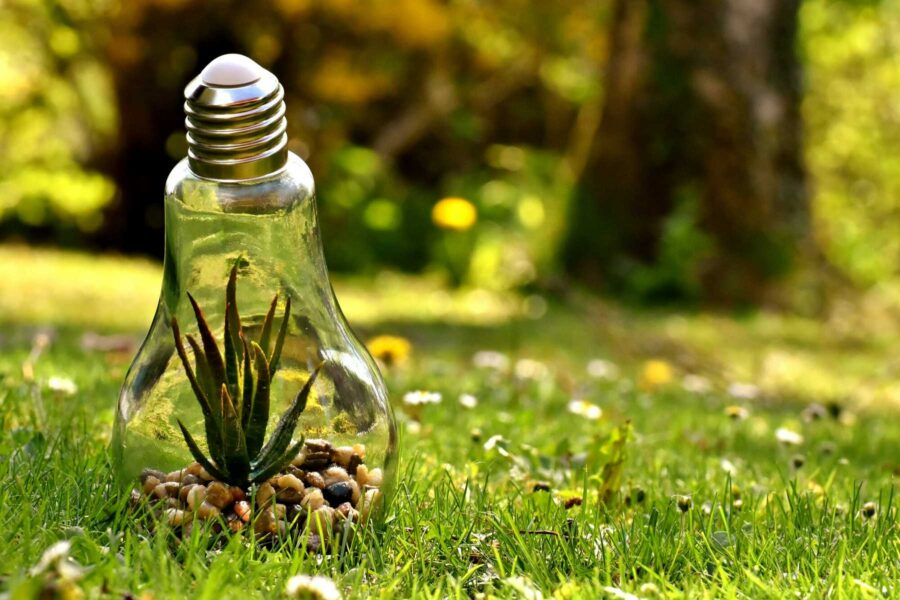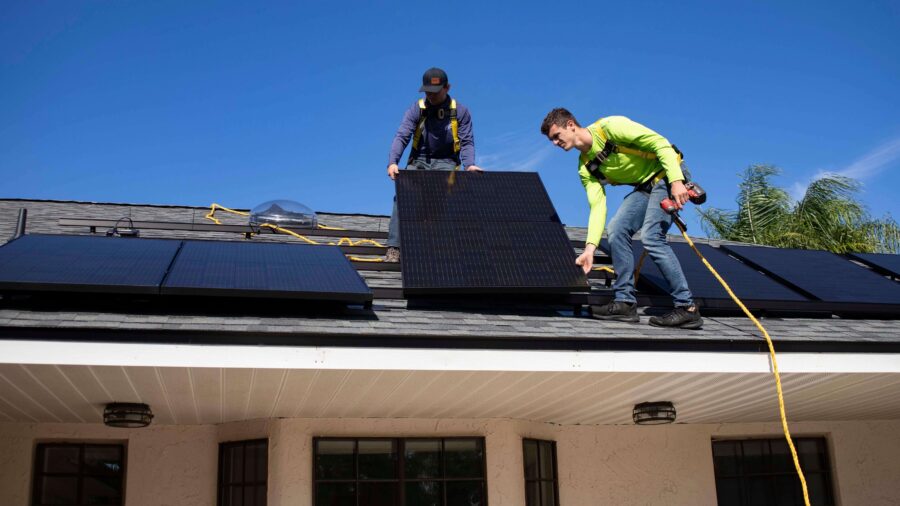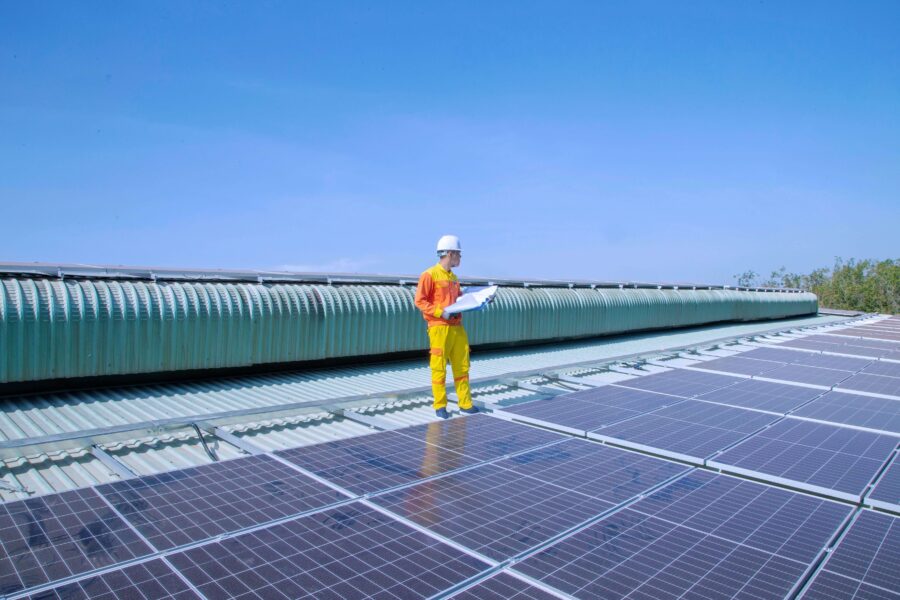Understanding the Environmental Impact of Energy Conservation
Upcoming solar and wind projects will account for 16% of total power generation in the United States this year. If we continue along this path, we can reduce our environmental impact and do better for the planet.
Renewable energy sources decrease our dependence on coal and natural gas. Making the switch to solar is one of the best ways to start living a greener lifestyle.
However, many people still want to know, how does conserving energy help the environment? That’s what we’re covering in this guide. Keep reading and learn what the experts say, discover actionable tips to reduce energy costs, and much more.
How Energy Waste Costs You
Identifying Energy Waste and Its Costs
There are many ways to waste energy, including drafty windows, inefficient insulation, outdated appliances, leaving the lights on, running the AC when no one is home, etc.
American households waste between $200 to $400 on energy expenses every year caused by old HVAC systems or air leaks. Not only does this cost you more in heating or cooling bills, but you’re also harming the environment by needlessly wasting energy.
An inefficient HVAC system has to work harder to keep your home comfortable. It uses more power to run only to produce sub-optimal results.
Importance of Efficient HVAC Systems
Energy-efficient HVAC systems use the Seasonal Energy Efficiency Ratio (SEER) for air conditioners and the Annual Fuel Utilization Efficiency (AFUE) rating for furnaces. The better the rating, the more efficient the units are and the less energy they waste.
Central air is also more efficient at cooling a home than window or wall units. However, it’s not always possible to make the switch. You can still do your part and start reducing energy by monitoring your heating and cooling usage.
Air conditioning costs homeowners $29 billion annually. Energy bills are only expected to climb as climate change causes soaring summer temperatures and a larger burden on the electrical grid.
Utility companies usually raise their rates in the summer, leaving many Texas residents struggling to keep up with the higher bills. Thankfully, you can take steps to reduce energy costs.
Taking Action: Tips to Reduce Energy Consumption
Whether you’re a homeowner or a renter, there are many ways to reduce energy bills. Some of these steps don’t cost you much at all, but each change makes a difference.
If you want to start living a more eco-friendly lifestyle, begin with these tips;
Maximize Energy Efficiency with a Smart Thermostat
Upgrading to a smart thermostat provides various benefits. You can easily monitor and adjust your energy usage from a smartphone or tablet. Many people aren’t even aware of how much electricity they’re wasting.
Smart thermostats come with apps that you can use to automatically regulate your heating and cooling, which saves you money. After all, why bother heating or cooling areas of the home you don’t use or while you’re away?
You can set schedules to lower power consumption while also keeping your home comfortable. Automate schedules so you never forget to make adjustments or use energy-saving features to find even more savings.
Cover the Windows
According to the U.S. Department of Energy, 76% of the sunlight that enters through double-pane windows becomes heat. In the summer, allowing that light (and heat) into your home makes it harder to stay comfortable.
Thankfully, the solution is simple. Closing the blinds or installing window treatments like curtains stops much of the heat from getting inside.
If you want to take it a step further, consider hanging thermal curtains to minimize the heat that enters during summer and keep warm air inside during winter. Window film is another option if you don’t want to block your view but you want to keep the house cool.
Use Ceiling Fans
Air conditioners use a ton of energy to keep your residence cool. Central air alone consumes 3000 and 3500 watts per hour.
On mild days when it’s not too hot, consider using fans instead. Ceiling fans help to circulate air in a room and use considerably less energy. Keeping the air circulating makes your environment more comfortable by evaporating the sweat from your skin.
That said, electric fans don’t prevent heat-related illnesses. The CDC recommends air conditioning when temperatures are in the high 90s.
On really hot days, combine ceiling fans with your air conditioning so you can raise the thermostat by a few degrees and still remain comfortable.
Maintaining your HVAC System for Optimal Efficiency
You need to perform or schedule regular HVAC maintenance if you want to keep energy bills low. Your heating and cooling systems have to run more frequently and use more power when they’re not regularly cleaned and maintained.
For instance, changing the air filter is a super simple step that any homeowner can take to keep their HVAC system running well.
Air filters gradually collect dust, dander, pet hair, pollen, and other airborne contaminants. While the filter keeps this out of your unit, a clogged filter makes it harder for your HVAC system to run.
Schedule regular HVAC visits to ensure your equipment is running as it should. If you have the budget for it, consider upgrading to a more energy-efficient model.
How Does Conserving Energy Help the Environment?
Now you know how reducing energy consumption helps you as a homeowner but how does it impact the environment? To answer that, we need to go over some statistics.
The Impact of Greenhouse Gasses
Carbon dioxide is a greenhouse gas that has a massive impact on our planet, specifically on our atmosphere. Our reliance on fossil fuels is the primary source of CO2. Other greenhouse gas emissions include methane, nitrous oxide, and fluorinated gases.
However, carbon dioxide accounts for 65% of global greenhouse gas emissions. Industrial processes and burning fossil fuels are significant contributors to climate change.
Additionally, according to that same data from the EPA, electricity and heat production account for about 25% of global greenhouse gas emissions.
When we burn coal, oil, or natural gas to produce electricity, it affects our planet in a big way by creating those emissions. Currently, the majority of electricity generation still comes from burning fossil fuels.
How Renewable Energy Sources Help
Renewable energy has been a buzzword for years, but what does it mean?
In short, it’s a type of energy that comes from natural sources and it’s replenished faster than it can be used. Renewable energy sources include solar, wind, geothermal, hydropower, and bioenergy.
Unlike non-renewable energy sources, such as fossil fuels like coal and oil, green energy sources are essentially infinite. Solar power is readily available and cleaner than traditional methods of energy generation.
Last year, solar and wind energy accounted for 12% of global electricity produced. It’s a step in the right direction, but we still have a long way to go.
Renewable energy sources provide us with what we need to maintain our lifestyles but without burning fossil fuels. We can create a smaller carbon footprint by conserving energy and switching to more eco-friendly power generation methods.
What Is Energy Conservation?
Understanding Energy Conservation and its Role
Energy conservation begins with households and individuals like you. By switching to a renewable energy source, you can reduce our reliance on fossil fuels.
When you choose to conserve energy, you’re making a conscious decision to help our environment. It might surprise you to learn that getting started is easier than you may think.
You can begin with the tips that we outlined earlier. In addition, you might want to get a home energy assessment or audit to find out where you’re spending the most money and where you can improve.
An assessment gives you a clearer picture of your family’s energy usage habits. It will also provide you with actionable steps to take to reduce waste.
You can perform one yourself or call in a professional. The benefit of hiring a professional is that they have specialized equipment to detect sources of energy loss, spot air leaks, and help you improve the efficiency of your appliances and hot water equipment.
Our Solar Buyback Plans
Exploring Solar Buyback Plans for Excess Energy
Did you know that if you have solar, you can sell the excess energy generated? Many homes that use solar, especially in sunny Texas, generate more power than they need.
Here at Chariot Energy, we offer 100% renewable energy options. Our solar buyback plans allow homeowners to receive credit for the excess KWHs that their solar panels create.
You can get paid for switching to solar and feel confident that you’re doing your part for the planet, too.
Transitioning to Solar Energy for a Greener Future
So, how does conserving energy help the environment? Making the switch to renewable energy sources like solar means that we rely less on fossil fuels and create fewer greenhouse gas emissions. As a result, people can reduce their carbon footprint.
If you’re interested in making the most of your switch to solar power, you should know that Chariot Energy provides some of the most competitive rates in Texas.
Head to our Find My Plan section to view rates on a solar buyback plan and get started conserving energy today. Also, if you have any questions, please contact us.

 Renew Now
Renew Now





